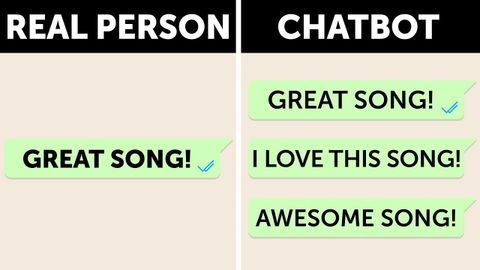ボットとチャットしているかどうかを見分ける5つの方法 (5 Ways to Tell If You're Chatting with a Bot)
林宜悉 が 2021 年 01 月 14 日 に投稿  この条件に一致する単語はありません
この条件に一致する単語はありません- n. (c./u.)集まり;仲間
- v.t.まとまる
- v.t./i.束ねられる
US /səˈfɪstɪˌketɪd/
・
UK /səˈfɪstɪkeɪtɪd/
- adj.話をより複雑にする;洗練された
- v.t.洗練させた
US /ˈkɑnˌtɛkst/
・
UK /ˈkɒntekst/
- v.i.(ある方向へ)徐々に進む : 向かう
- v.t.世話をする : 面倒を見る
- v.t./i.~する傾向がある
エネルギーを使用
すべての単語を解除
発音・解説・フィルター機能を解除

